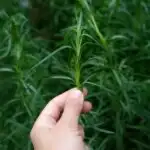
Far too often, tarragon is one of those herbs that gets shuffled to the back of your herb collection to be forgotten. But the wise chef knows the power of this classic culinary herb and the incredible flavor it imparts to a dish.
While tarragon dries well, it’s best when snipped fresh. Luckily, the “King of Herbs,” as it’s known in France, is quite easy to grow. So, if you’ve ever thought about planting tarragon or if you should even bother, look no further – this is your complete guide to growing and using tarragon.
Tarragon is a perennial herb (grown as an annual in some places) known for its distinct anise-like flavor and aroma.
Because it’s easy to grow, tarragon is the perfect addition to any herb garden, including the one on your windowsill. Consider this your one-stop comprehensive tarragon guide, where we will cover the ins and outs of growing tarragon, dealing with common pests and problems that may arise, and how to fix them. Finally, we’ll look at how best to use tarragon in the kitchen so that you won’t have any dusty, forgotten bottles hiding in your pantry anymore.
Getting Started – Which Tarragon & Where?
Before you get started, it’s a good idea to select the appropriate variety for your zone and find the ideal spot in your garden.
There are three main types of tarragon: French tarragon (Artemisia dracunculus) Russian tarragon (Artemisia dracunculus) and Mexican tarragon (Tagetes lucida).
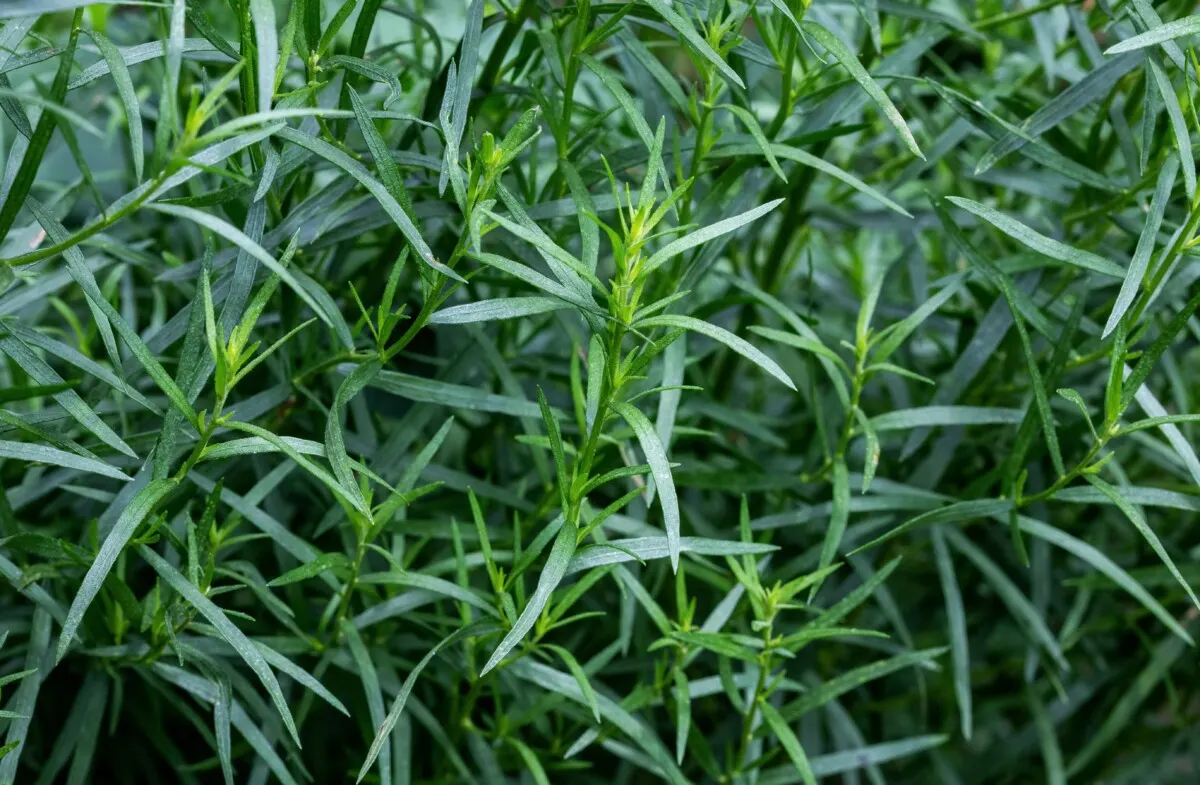
French tarragon grows to 2-3 feet tall and around a foot to a foot and a half wide. It is winter hardy in US zones 4-9, but if you live in an area with especially harsh winters, you may need to cover or mulch your tarragon. French tarragon is the most notable variety in culinary use.
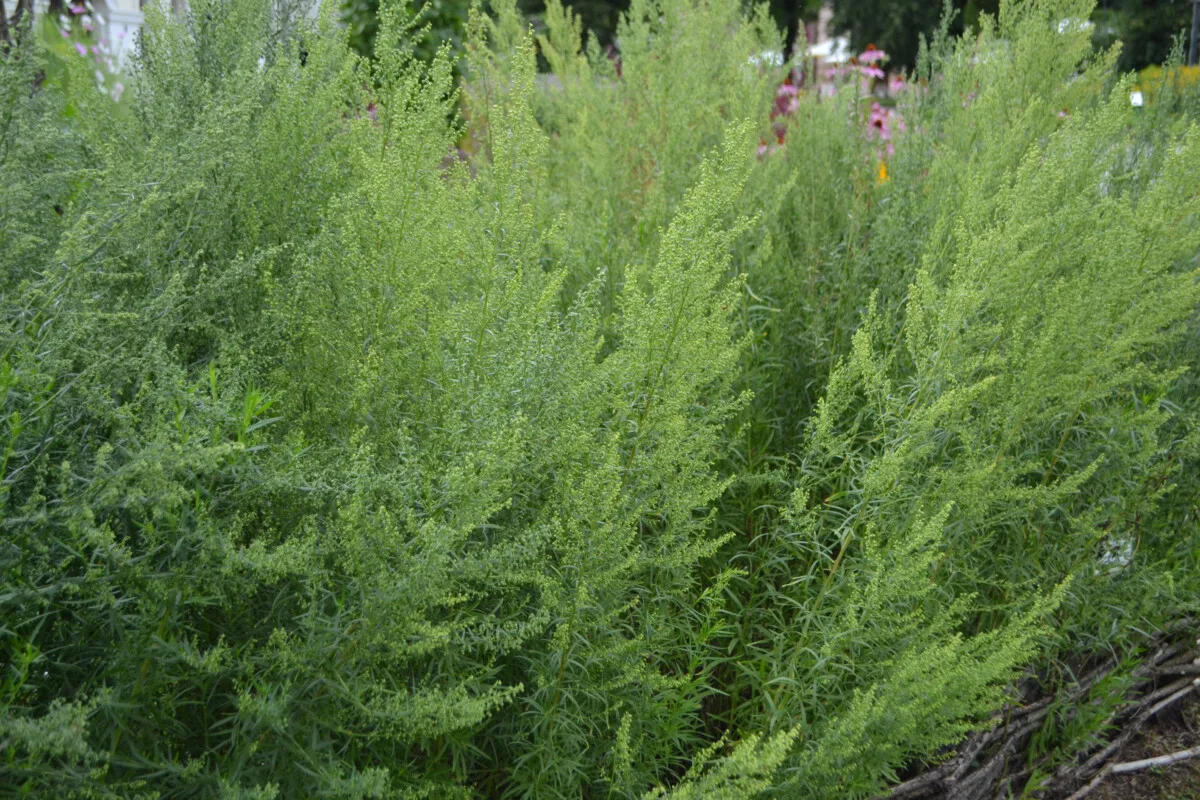
Russian tarragon is an excellent choice if you’re looking for more of a bush habit, as it can grow up to five feet tall and roughly three feet wide. It’s also hardy in US zones 4-9 and is a bit tougher than its French counterpart. However, it’s generally accepted that Russian tarragon has less flavor than French tarragon.
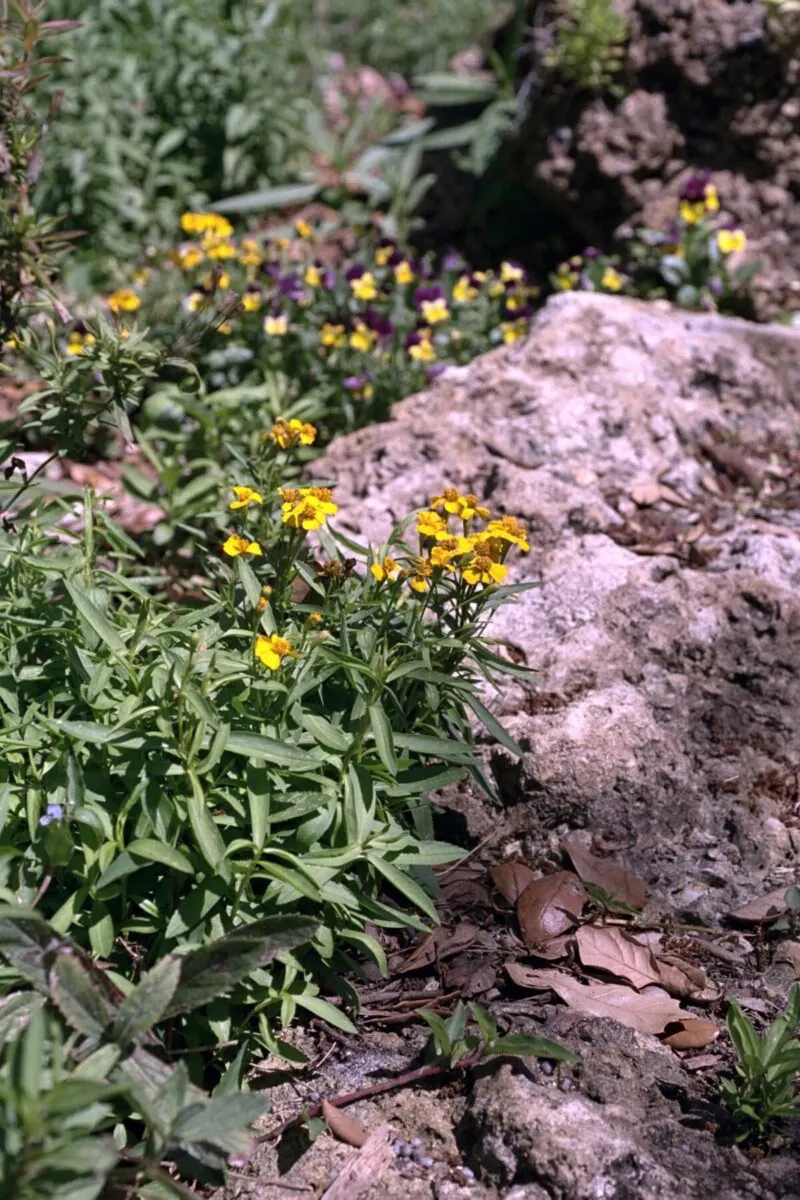
Mexican tarragon, although not a true tarragon (a member of the marigold family), is a great alternative if you live in warmer regions, as both the French and Russian varieties can be tricky in warmer climates. Its size is identical to French tarragon. Mexican tarragon grows best in US hardiness zones 9-11, where it can be grown as a perennial.
Choosing where to grow your tarragon is important as they are a bit finicky about soil and require plenty of sun.
At least six hours of direct sunlight daily will keep tarragon happy. They do not tolerate shade or damp areas, as they’re susceptible to powdery mildew.
Well-draining soil is crucial for tarragon. Adding organic matter, such as compost or leaf mold, will improve drainage and add nutrients to the soil. Heavy clay soil will also benefit from the addition of a bit of sand.
Planting Tarragon
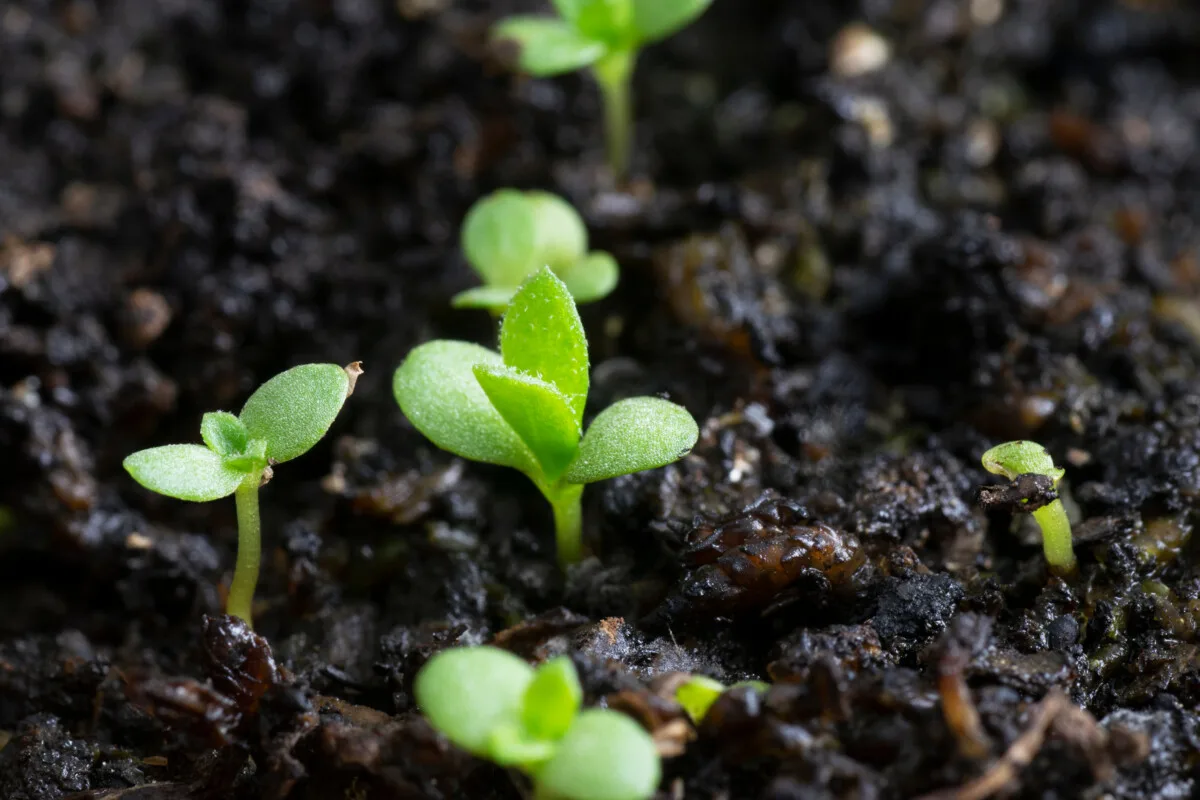
Tarragon can be propagated either from seeds, cuttings or division. However, growing from seeds can be challenging. If you choose to grow tarragon from seed, you may wish to germinate the seeds on a damp paper towel before moving them into a soilless potting mixture. If you plant seeds directly in the soil, don’t cover them; just press them lightly into the soil.
Cuttings can be propagated in water or soil like many other herbs.
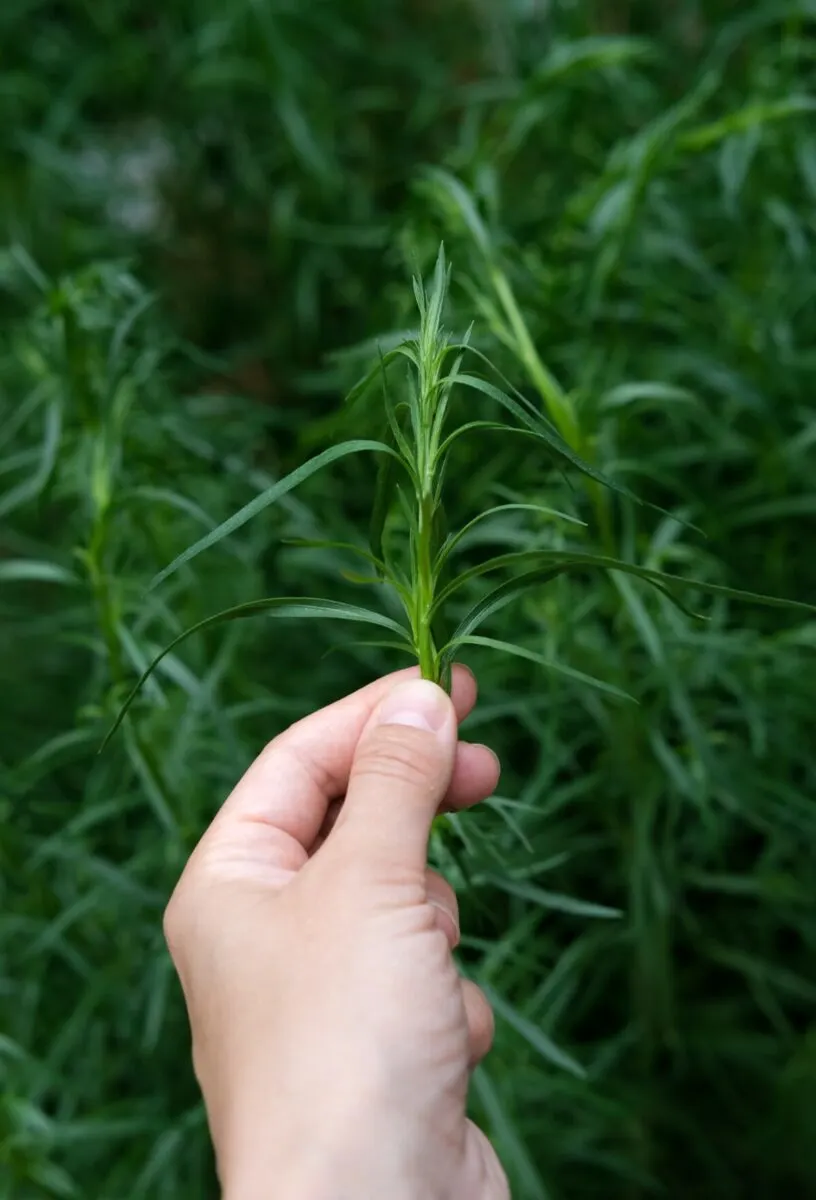
Choose a stem of tarragon 6-8 inches long and remove the leaves from the bottom half of the plant. Put the cuttings in water and change the water once a week until roots appear. Once the roots are about 2 inches long, you can transplant the cuttings in soil. Place stripped stems in moist soilless potting mix. Keep the soil moist, but not soggy. New roots will grow in a couple of weeks. Harden off cuttings before transplanting them outdoors.
Divide tarragon in the spring or fall to make new plants.
Because of its culinary popularity, you can easily find tarragon seedlings that can be planted directly in your garden.
When should you plant tarragon?
Plant tarragon in early spring after the last frost date or in the fall, allowing for plenty of time for the plant to become established before the first frost. If you’re planting in the fall, you will want to cover and mulch the plant for the first winter.
Spacing
Tarragon needs plenty of space to ensure proper airflow to prevent disease. If you’re growing French or Mexican tarragon, space the plants about 18 to 24 inches apart. For Russian tarragon, you’ll want to give them even more space, between 24-48 inches apart.
Planting
Dig a hole slightly larger than the root ball of the transplant. Add a little compost to the bottom of the hole and place the transplant in the ground. Be sure the crown of the plant is level with the soil surface. Backfill the hole and gently firm the soil around the plant. Water in your new tarragon as soon as it’s planted.
Caring for and Maintaining Tarragon
While it’s not a fussy herb, tarragon has a few basic needs that you need to take care of to ensure you have a healthy, thriving plant.
Watering
It’s best not to let the soil dry out, as tarragon prefers slightly moist soil. You’ll need to water the plants during dry spells. But be careful not to overwater, as tarragon is susceptible to root rot. Making sure you have well-draining soil is the best way to avoid the problem.
Fertilizer
If you’ve added compost to the soil, you will most likely not need to add fertilizer. It’s always a good idea to test your soil before adding fertilizers to determine any deficiencies. Because tarragon is a leafy plant, it needs nitrogen to grow well. You can plant tarragon amidst your legumes, which will happily provide all the nitrogen needed.
An important note: don’t go crazy with the fertilizer, as too much can affect your tarragon’s flavor. Again, testing your soil before fertilizing is always a good idea.
Pruning
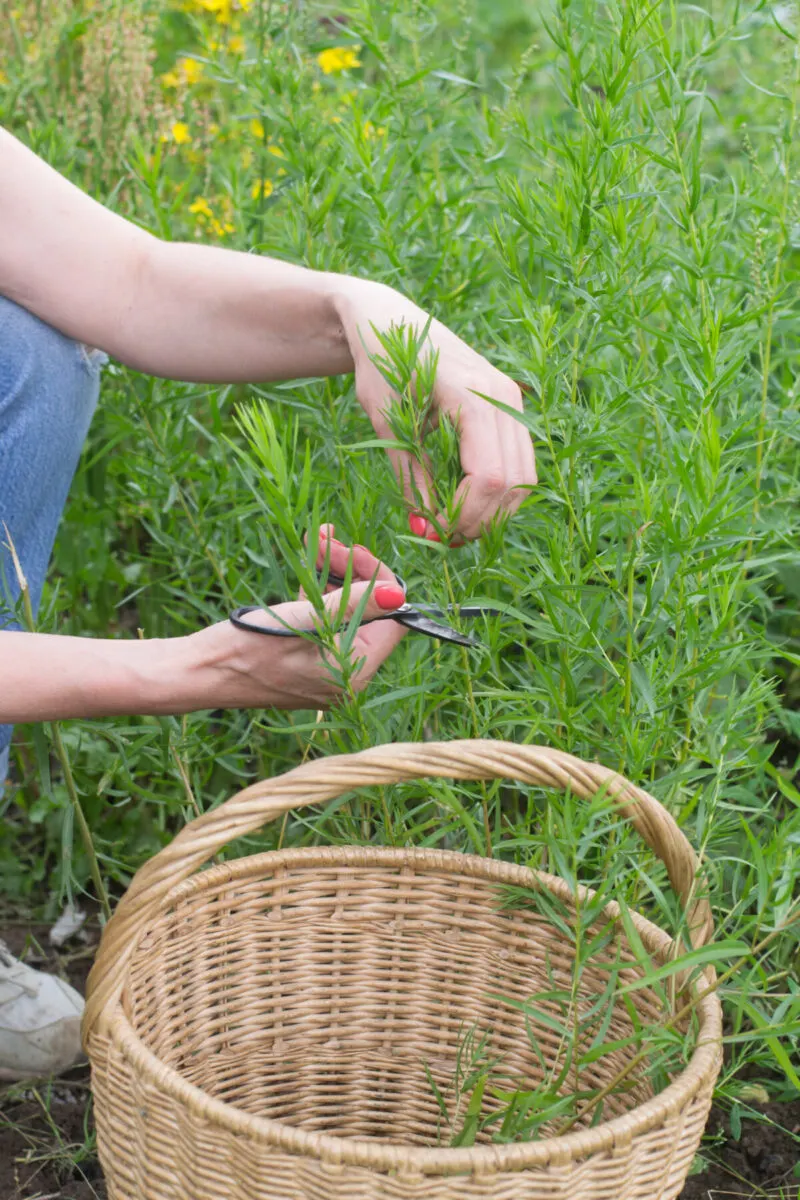
Nearly all herbs benefit from regular pruning to encourage new growth and maintain a pleasing shape. Trim the stems back by one-third in early spring or after the first frost in fall. Of course, regular trimming as you use the herb will help too.
Growing Tarragon in Containers
You can easily grow tarragon in containers if you provide proper drainage and ensure the planter gets plenty of sunshine. If you’re growing tarragon indoors, place it in a sunny window for the best results. Water whenever the top inch of soil is dry, and tip out any excess water in the saucer after watering.
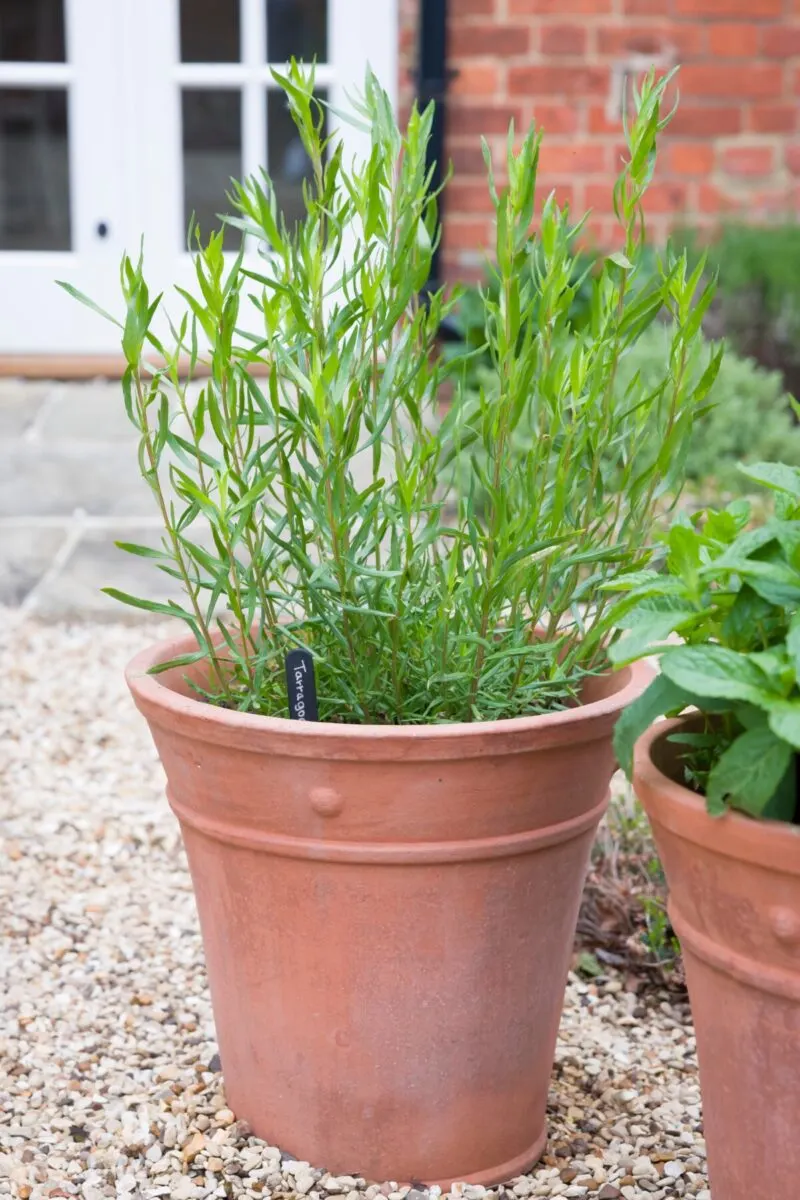
You will need to fertilize more often when growing tarragon in containers. Again, choose a balanced fertilizer and be careful not to over-fertilize.
If you grow tarragon indoors, it won’t usually reach the full mature size it would outdoors. But if you don’t have a lot of space, this is a pro rather than a con.
Common Tarragon Growing Problems and How to Fix Them
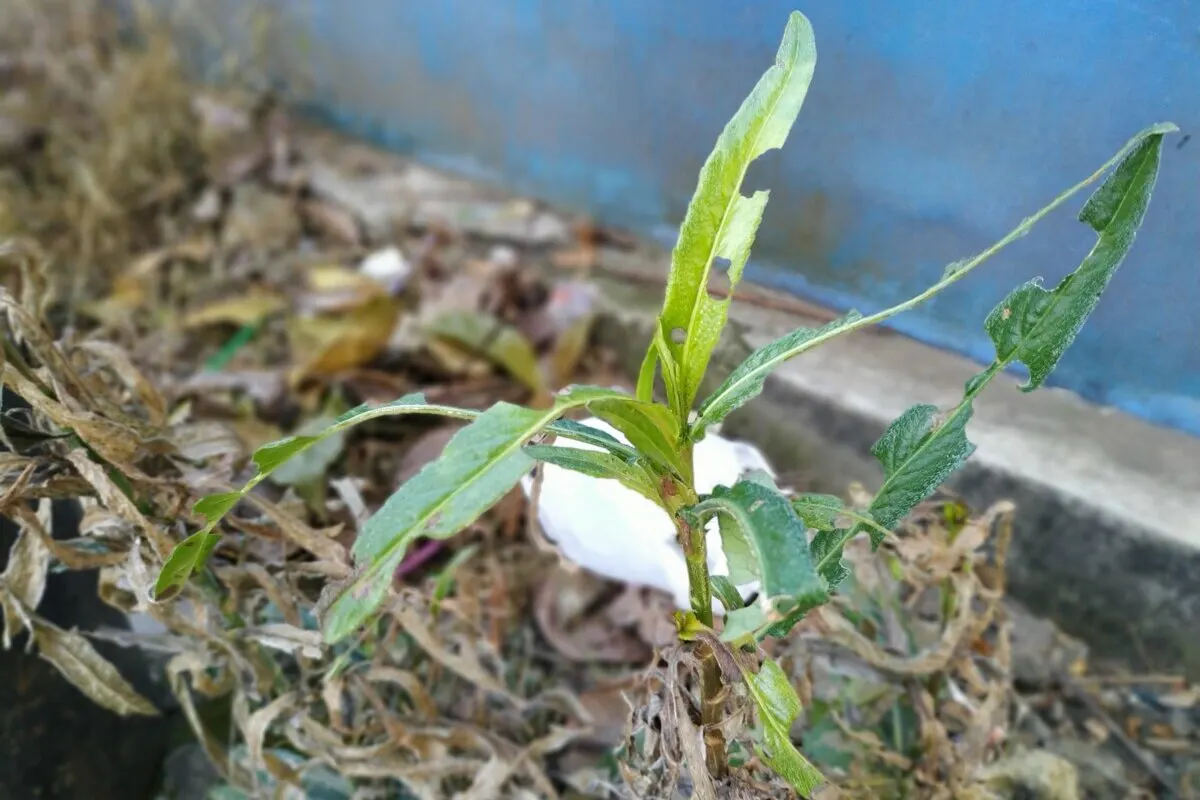
Despite its resilience, tarragon may encounter a few issues during cultivation. Here are some common problems and their solutions.
Powdery Mildew
Powdery white splotches on the leaves are a sign of powdery mildew. Improve air circulation, avoid overhead watering, and use an organic fungicide to clear it up. If plants are too close together, prune them back hard and move them apart in the spring or fall.
Root Rot
Tarragon doesn’t like wet feet! Overwatering or poorly draining soil can cause root rot. Like many other things in life, prevention is the best cure. Start with well-draining soil and avoid overwatering tarragon, which is easier said than done during a wet, rainy season.
Lack of Flavor
Tarragon should be pungent, with a nice anise-like bit to it. If you find your tarragon is lacking, it probably needs more sunlight, or you may have used too much fertilizer. If you haven’t fertilized at all, this lack of flavor can be caused by missing nutrients.
Drying Tarragon
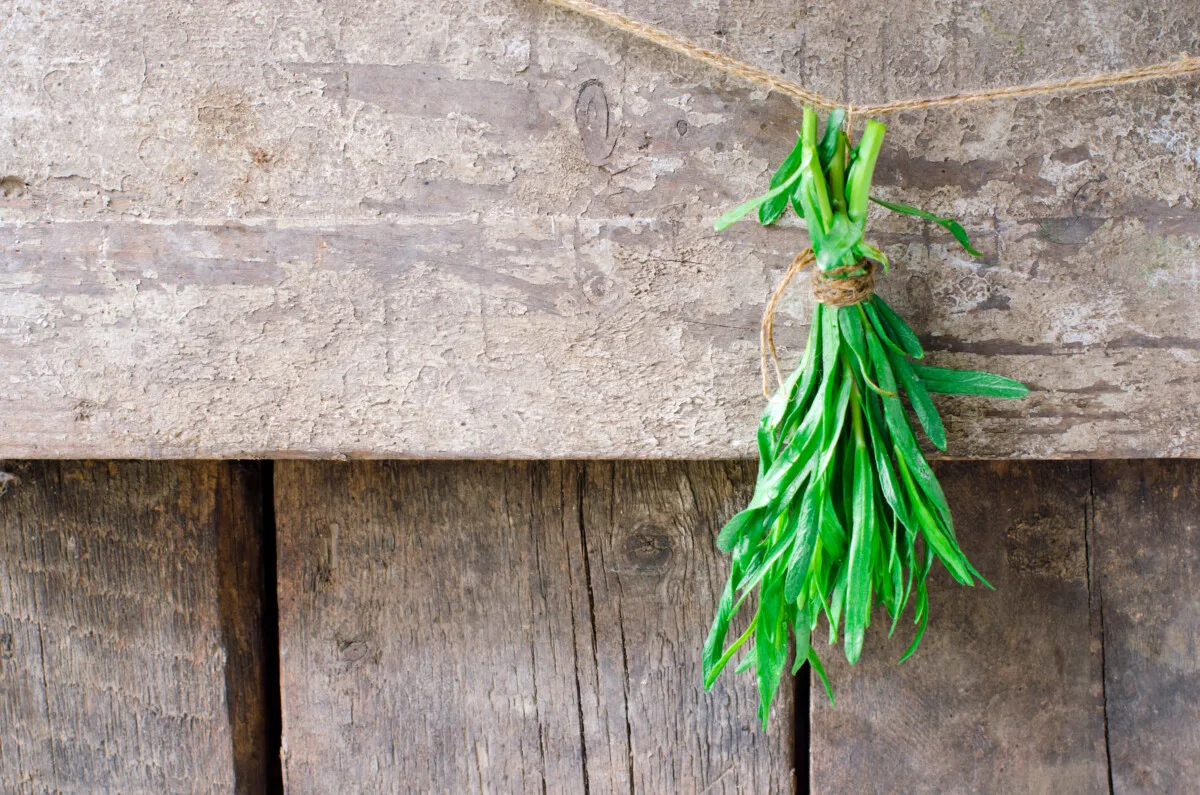
Tarragon dries beautifully, but the flavor compounds are highly volatile and susceptible to heat and light. The best way to dry tarragon is by hanging it somewhere dark and dry with plenty of airflow. Cheryl’s herb drying rack is perfect! A small fan can help speed up the process.
If you use a dehydrator, set it to its lowest temperature.
Store dried tarragon in a cool, dark place.
The Fun Part – What to Do With Your Tarragon
Put it on chicken. The end.
Just kidding.

Tarragon’s unique flavor profile lends itself to a variety of dishes. Here are a few popular uses:
- Seasoning: Tarragon is a staple in French cuisine, adding depth and complexity to dishes like sauces, dressings, and soups.
- Vinegars and Oils: Infuse vinegar or oil with tarragon to create aromatic and flavorful bases for marinades, dressings, and vinaigrettes.
- Poultry, Fish and Eggs: Tarragon pairs exceptionally well with poultry, eggs and fish, especially chicken. Use it as a seasoning for roasted chicken or grilled fish, or incorporate it into creamy sauces. Tarragon chicken salad sandwiches are a summertime staple in my kitchen.
- Herbal Tea: Steep tarragon leaves in hot water for a soothing and refreshing herbal tea. Add a touch of honey and lemon for enhanced flavor. Serve it iced for the perfect summer refreshment.

Tarragon – a helper in the garden
Aside from creating fragrant and flavorful dishes in your kitchen, tarragon is an excellent plant to add to your garden and landscape. The natural scent of tarragon attracts many helpful insects to your garden, including predatory wasps, ladybugs and green lacewings. These predatory bugs help tip the scales in your garden’s never-ending pest war.

Get the famous Rural Sprout newsletter delivered to your inbox.
Including Sunday musings from our editor, Tracey, as well as “What’s Up Wednesday” our roundup of what’s in season and new article updates and alerts.


